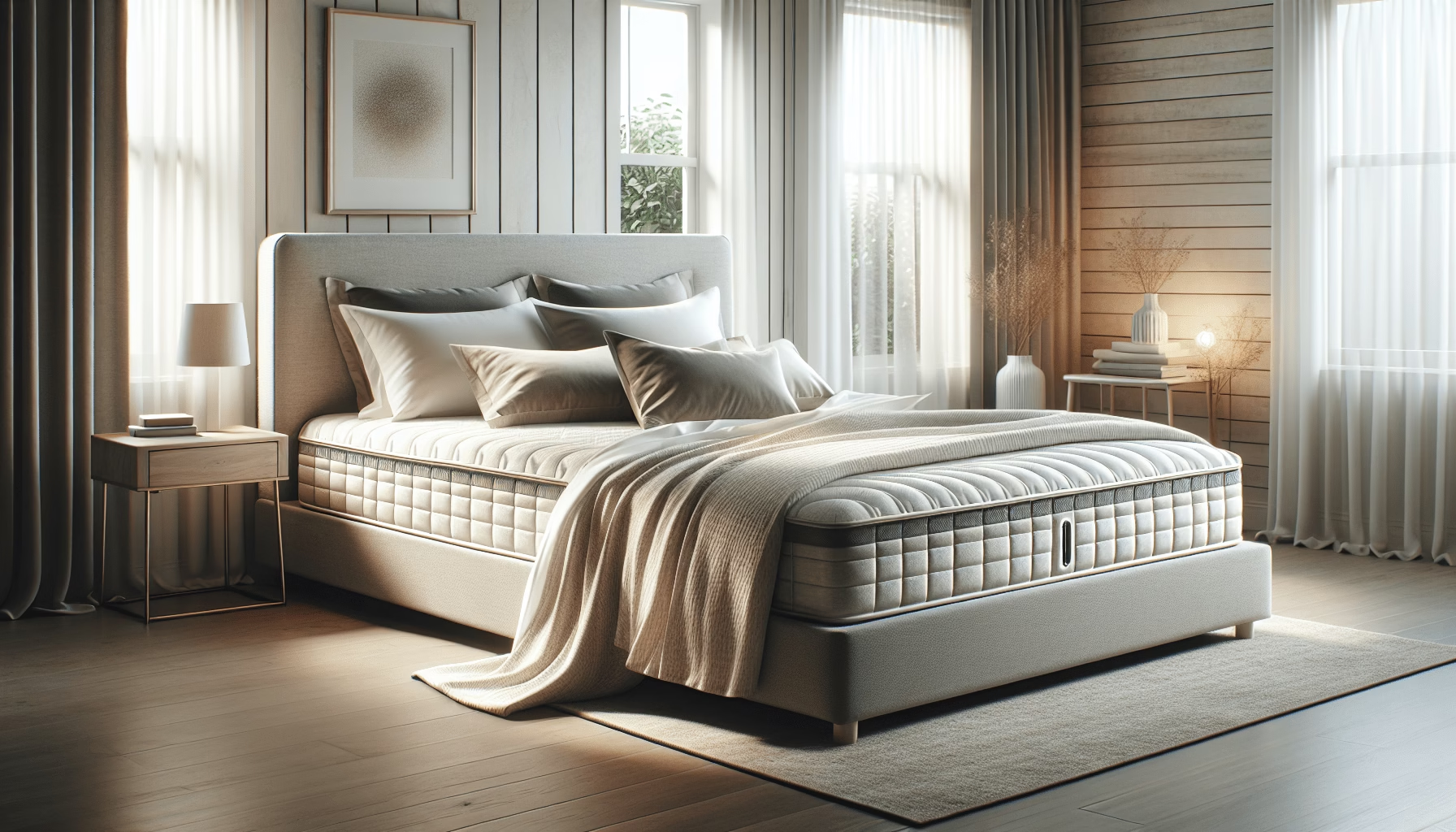Do you find yourself tossing and turning at night, waking up with aches and pains? It might be time to consider whether your bed is the culprit behind these restless nights. A good night’s sleep is the foundation of a healthy lifestyle, and the bed you choose plays a pivotal role in ensuring that rest is as restorative and pain-free as possible. In “The Ultimate Bed Selection Guide for Pain-Free Sleep,” we will delve into what it means to choose the right bed and how it can transform your sleep experience.
Understanding the importance of a suitable bed is essential before making your next purchase. This guide will navigate you through the intricate world of mattresses, bed frames, and pillows, helping you to make informed decisions that suit your sleeping habits and physical needs. Let’s break this down, step by step.

Table of Contents
The Evolution of Beds and Sleep
A Brief History of Bed Design
Beds have come a long way from the piles of leaves and straw used by our ancestors. Despite these humble beginnings, the primary purpose of a bed has always remained the same: to provide a comfortable place to rest. Ancient Egyptians took it up a notch with raised platforms, and the Romans introduced more elaborate bed frames. Fast forward to modern times, we have a myriad of options that focus not just on comfort but on ergonomics and health.
The evolution reflects our growing understanding of the human body and the importance of sleep. What was once merely a place to lie down has become a tool for promoting health and preventing discomfort.
The Science of Sleep
Sleep is much more than just a period of rest. It’s a complex process that involves several stages, each integral for repair, memory consolidation, and overall physical health. A poor bed can disrupt these stages, leading to reduced sleep quality and various physical complaints.
Quality sleep is characterized by uninterrupted cycles and comfort, free from the disturbances of inadequate support. Choosing the right bed is fundamental to achieving this ideal sleep state.
Key Factors to Consider in Bed Selection
Mattress Types and Their Benefits
When selecting a mattress, it’s crucial to understand the different types available and how each can benefit different sleeping styles and needs.
Memory Foam: Known for its contouring properties, it provides excellent support by distributing body weight evenly, which can help alleviate pain. Ideal for those with joint issues.
Innerspring: Traditional and widely used, innerspring mattresses offer good support and a range of firmness levels. Best for individuals who prefer a bouncier bed.
Latex: Natural and breathable, latex mattresses are often recommended for people with allergies and those needing a more eco-friendly option. They offer strong support and are often a favorite for back sleepers.
Hybrid: Combining coils and foam layers, hybrid mattresses offer the benefits of both. They provide strong support with the added comfort of foam.
Understanding Firmness Levels
The firmness of a mattress is another crucial factor, varying from plush to very firm. Your choice should depend on your sleeping position and personal comfort preference.
Soft: Best for side sleepers who need cushioning around shoulders and hips.
Medium: Suited for back sleepers, offering the right balance of support and comfort.
Firm: Ideal for stomach sleepers or those with back pain, as it prevents sinking and keeps the spine aligned.
It’s essential to note that firmness preference is subjective. A mattress that feels too firm or soft in the store might feel different after a full night’s sleep.

Bed Frames: Finding Your Perfect Fit
Types of Bed Frames and Their Impact
Bed frames are often an overlooked aspect of bed selection, but they play a significant role in the overall support and longevity of your mattress.
Platform Beds: No box spring is needed, and they provide a sleek, contemporary look. They’re suitable for memory foam and latex mattresses.
Adjustable Beds: Great for those with specific health concerns, allowing you to change the position of your mattress for maximum comfort and support. Ideal for those who read or watch TV in bed.
Traditional Box Spring: Offers added height and a bounce, useful with innerspring mattresses but not necessary for modern foam mattresses.
Materials and Durability
Common materials for bed frames include wood, metal, and upholstered options.
Wood Frames: Durable and sturdy, offering a classic look. They may require more maintenance but tend to withstand the test of time.
Metal Frames: Strong and minimalistic, often more affordable and easier to move.
Upholstered Frames: Provide added design elements but may require more upkeep to avoid dust and stains.
Consider the weight capacity and the space in your bedroom when choosing the size and style of the frame.
Pillows: The Unsung Heroes of Comfort
Pillow Types and Their Impact on Sleep
Often, discomfort during sleep is not just about the mattress; your choice of pillow is equally significant. A well-suited pillow can transform your sleep posture and help alleviate neck and shoulder pain.
Memory Foam: Adjusts to the shape of your head and neck, offering cushioning and support.
Down or Feather: Provides a soft, luxurious feel and is adjustable. They might not be suitable for those with allergies.
Latex: Similar to latex mattresses, they are hypoallergenic and offer firm support.
Adjustable: These pillows allow you to add or remove filling to achieve your desired loft and firmness.
Matching Pillows to Sleeping Positions
Your sleeping position can dictate which type of pillow will offer the best support.
Side Sleepers: Need a firm and high-loft pillow to fill the space between their shoulder and head.
Back Sleepers: Medium-loft pillows work best, supporting the natural curve of the neck.
Stomach Sleepers: A soft, low-loft pillow is ideal to prevent neck strain.

Aligning Your Sleeping Setup
Enhancing Your Sleep Environment
Beyond choosing the right bed, creating an optimal sleep environment is vital. Consider factors like room temperature, lighting, and noise. Blackout curtains and sound machines can enhance sleep quality, making your bed selection even more impactful.
Bedding and Accessories
Choosing breathable and comfortable sheets amplifies the experience of your selected mattress. Materials like cotton or bamboo can regulate temperature and increase comfort.
Consider adding a mattress protector to safeguard your investment and ensure longevity.
Common Bed Selection Mistakes
Avoiding Pitfalls in Your Purchase
Skipping a Sleep Trial: Many retailers offer trials, allowing you to test the mattress before committing. Use this to your advantage.
Focusing Solely on Price: While budget is important, investing in a quality bed pays off in the long run with better health and productivity.
Ignoring Personal Needs: What works for someone else might not work for you. Consider your own body and sleep habits above trends and reviews.
Seeking Professional Advice
If you’re dealing with specific pain issues, consulting a healthcare professional could provide personalized insights into the best bed choice for your condition.

Case Studies and Comparisons
Real-World Success Stories
Meet Joanna, a back pain sufferer. Transitioning from a spring to a hybrid mattress, combined with an adjustable base, not only improved her comfort but also significantly reduced her nighttime wakefulness. Or take Alex, who found relief in a memory foam mattress topped with a cooling gel layer, addressing both pain and temperature sensitivity.
Comparing Bed Brands and Options
Different brands offer varying features, warranties, and price points. It’s essential to compare these elements to find the best match for your needs. Look for brands that align with your values, be it sustainability, technological advancements, or budget-friendliness.
Conclusion: Your Path to Pain-Free Sleep
Selecting the right bed can be transformative, leading to healthier, more restful nights. By understanding the nuances of your sleeping needs, from mattress type to pillow choices, you set the foundation for a revitalized and pain-free sleep experience. Tailor your decision based on informed insights and personal preferences, and your bed will surely become your sanctuary of rest.


